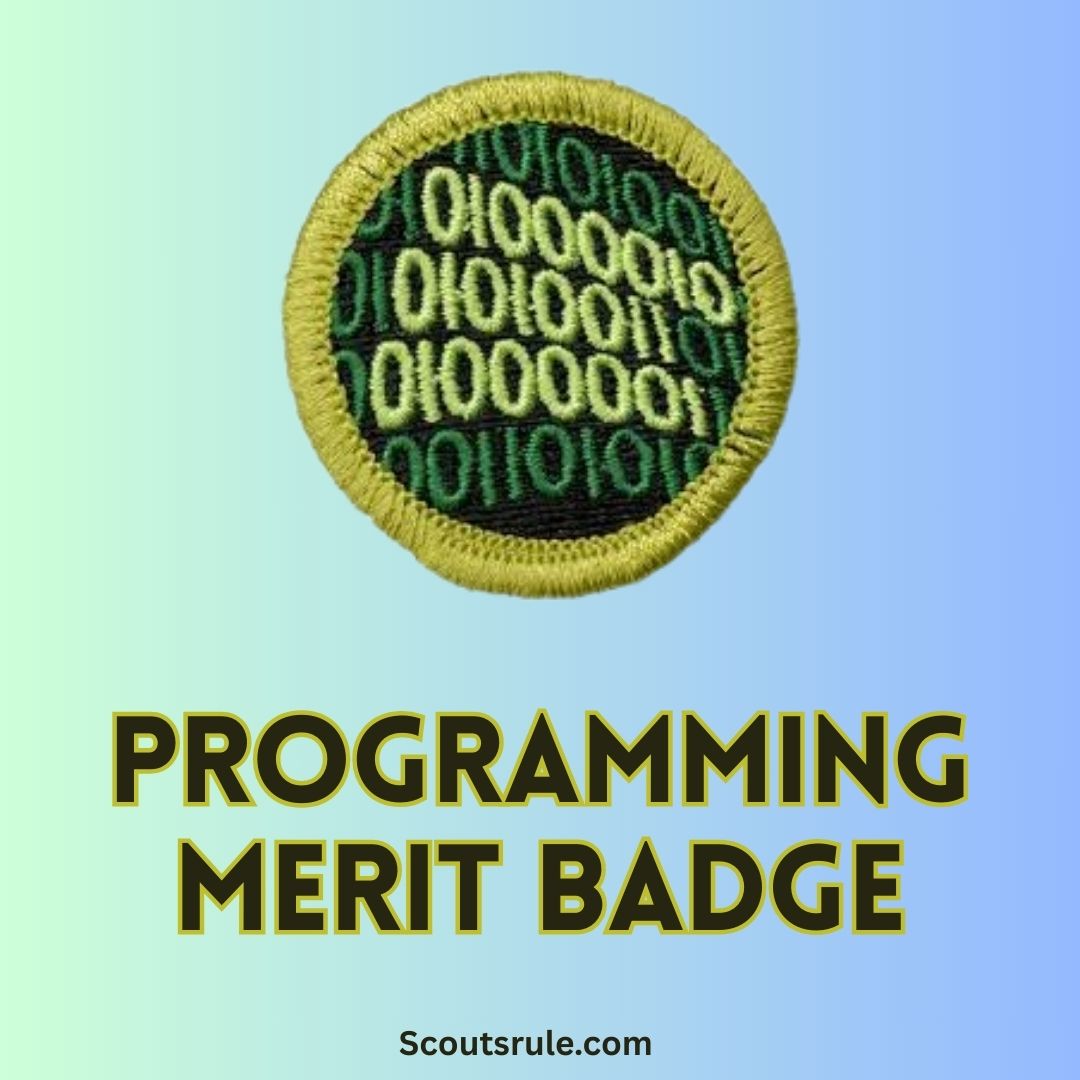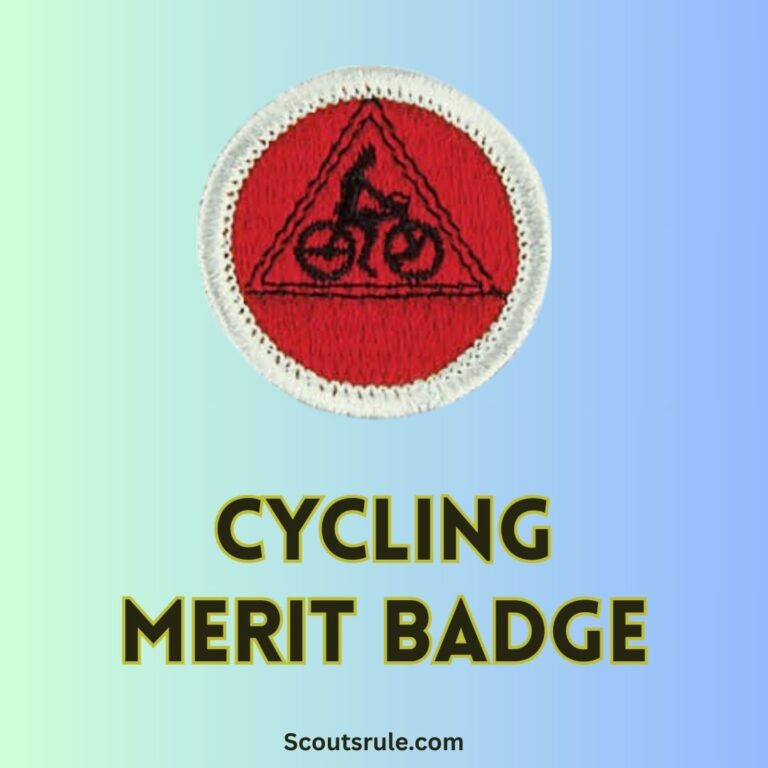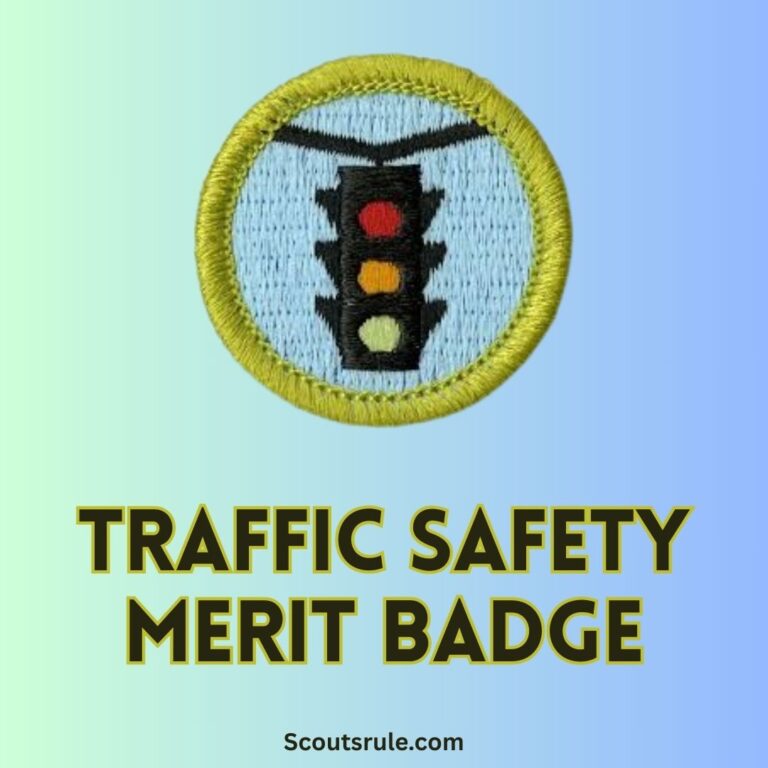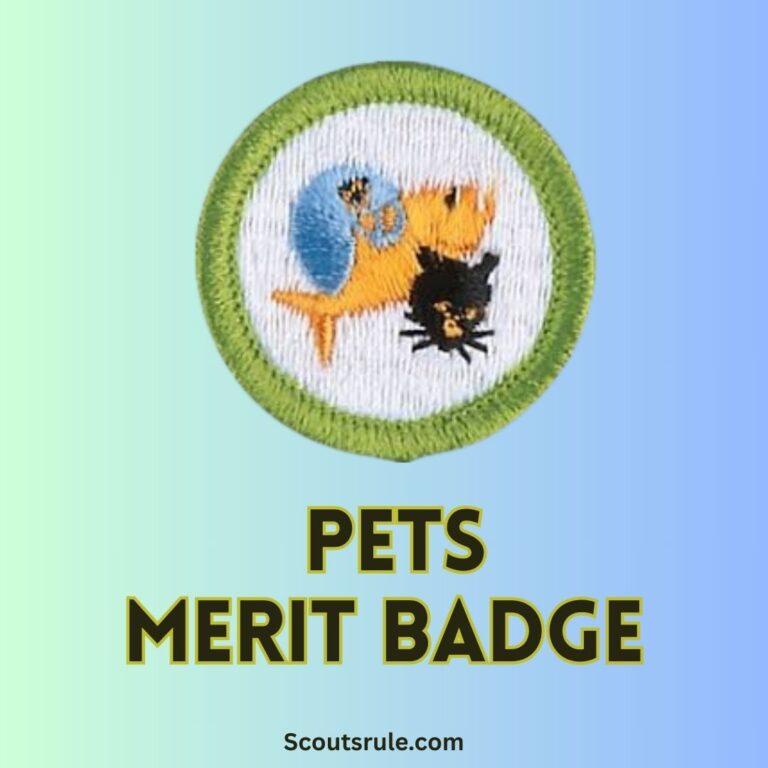
This guide is designed to help you understand the requirements, develop essential skills, and engage in hands‑on projects—all while deepening your grasp of computer programming. It serves as an in‑depth study aid and resource to complement the official Boy Scouts of America Programming Merit Badge pamphlet. Remember, these suggestions are intended to guide you in formulating your own responses based on personal research and experience. Always work closely with your merit badge counselor and refer to current official guidelines.
Post Contents
- Introduction: Unlocking the World of Programming
- 2. Purpose and Objectives of the Programming Merit Badge
- 3. Overview of Requirements
- 4. Detailed Guidelines and Study Suggestions
- 5. Documentation and Record Keeping
- 6. Additional Tips, Resources, and Career Connections
- Conclusion: Embracing the Future Through Programming
Introduction: Unlocking the World of Programming
In today’s digital age, computer programming is a powerful tool that influences every aspect of our lives. From interactive websites and mobile apps to complex algorithms that drive artificial intelligence and robotics, programs translate human ideas into computer-executable instructions. The Programming Merit Badge invites you to explore the world behind the screen. It challenges you to understand computer languages, trace the history of programming, consider ethical issues related to the digital realm, and apply your knowledge to create and modify your own computer programs.
By learning the fundamentals of programming, you not only expand your technical skills but also develop critical thinking, problem-solving, and logical reasoning. These skills grant you an advantage in academic pursuits, future careers, and everyday problem solving. As you progress through this merit badge, you will gain exposure to different programming languages, study the evolution of computer science, and work on projects that could even spark a passion for a career in technology.
2. Purpose and Objectives of the Programming Merit Badge
The Programming Merit Badge is designed to provide you with a well-rounded introduction to the world of computer programming. Its key objectives are to:
- Enhance Educational Growth: Understand the history, evolution, and applications of programming. Learn about the role that programming plays in nearly every modern technology.
- Develop Technical Skills: Gain proficiency in multiple programming languages and development environments. Learn basic coding techniques, debugging, and program modification.
- Foster Critical and Creative Thinking: Analyze how programming languages evolve, what drives their design choices, and consider potential future trends in technology.
- Explore Intellectual Property: Understand how computer programs are protected legally. Learn the difference between various forms of software distribution—freeware, open-source, and commercial software.
- Promote Practical Experience: Complete real-world projects that allow you to modify existing code or create something new from scratch. Apply your skills in a controlled yet creative environment.
- Encourage Ethical Awareness: Develop an understanding of safety and ethical issues in programming, including data protection, responsible use of code, and the importance of following guidelines to prevent repetitive stress and eyestrain.
- Career Exploration: Discover potential career paths in coding, software development, engineering, and information technology.
These objectives empower you with knowledge and confidence that are essential not only for earning the badge but also for engaging in our increasingly digital world.
3. Overview of Requirements
The Programming Merit Badge outlines several distinct categories of work. While you should refer to the current official pamphlet for precise wording and details, the typical requirements are divided into five broad areas:
- Safety:
- 1a: Show your current, up‑to‑date Cyber Chip.
- 1b: Discuss first aid and prevention for injuries that may occur during programming (e.g., repetitive stress, eyestrain).
- History:
- 2a: Give a brief history of programming, including at least three milestones in its evolution.
- 2b: Discuss with your counselor how programming and programming languages have evolved over time.
- General Knowledge:
- 3a: Create a list of popular programming languages (commonly five or more) and describe the primary industries where they are used.
- 3b: Describe three different programmed devices that you rely on each day.
- Intellectual Property:
- 4a: Explain the four types of intellectual property used to protect computer programs.
- 4b: Describe the difference between licensing and owning software.
- 4c: Describe the distinctions among freeware, open-source, and commercial software, and explain why it is important to follow their terms.
- Projects:
- 5a: With counselor approval, select an existing program, modify or add to its code, debug it, and demonstrate the changes.
- 5b: With counselor approval, choose a second programming language and development environment (different from that used in 5a and applicable to a different industry), write, debug, and demonstrate a functioning program.
Each section requires thoughtful research, practical work, and comprehensive documentation. Next, we provide detailed guidelines to help you prepare your responses.
4. Detailed Guidelines and Study Suggestions
4.1 Requirement 1: Safety
4.1.1 Cyber Chip and Preventing Injuries
- Cyber Chip: Ensure that you have a current Cyber Chip that demonstrates you are up to date with BSA’s digital safety guidelines. This chip verifies that you understand cybersecurity basics and responsible online behavior.
- First-Aid and Injury Prevention: Discuss common injuries related to programming activities:
- Eyestrain: Explain how using proper lighting, taking regular breaks (e.g., the 20-20-20 rule: every 20 minutes, look at something 20 feet away for 20 seconds), and adjusting screen brightness can prevent eyestrain.
- Repetitive Stress Injuries: Cover strategies such as ergonomic seating, proper keyboard and mouse positioning, stretching exercises, and limiting continuous work periods to mitigate the risks of carpal tunnel or other repetitive stress issues.
Your answer should reflect an understanding of best practices for staying safe while using computers and performing long periods of coding and data entry.
4.2 Requirement 2: History
4.2.1 Identifying Milestones in Programming
- Key Milestones: Identify at least three important milestones in the history of programming. These could include:
- The creation of early assembly languages and machine code.
- The development of higher-level languages such as FORTRAN or COBOL.
- The advent of personal computers and graphical user interfaces (GUIs).
Discuss how these milestones contributed to making programming more accessible and powerful. Use examples to highlight the impact of these breakthroughs on both technology and society.
4.2.2 Evolution of Programming Languages
- Discussion Points: Explain how programming languages have evolved over time. Mention important aspects such as:
- Increased abstraction: from machine code to high-level languages.
- The rise of object-oriented programming, allowing for modular and reusable code.
- The current trend toward scripting languages and languages designed for specific needs (e.g., Python for data science, JavaScript for web development).
Prepare to discuss how this evolution has opened opportunities in various industries and influenced modern software development practices.
4.3 Requirement 3: General Knowledge
4.3.1 Popular Programming Languages and Their Uses
- Create a List of Languages: List at least five (or more, if your official requirement specifies) popular programming languages in use today. Examples might include:
- Python: Widely used in scientific computing, web development, data science, and machine learning.
- Java: Extensive use in enterprise applications, web services, and Android app development.
- JavaScript: Crucial for client-side web development and increasingly used on the server side with Node.js..
- C++: Often found in systems programming, video game development, and performance-sensitive applications.
- Ruby: Known for its simplicity and productivity, popular in web development with Ruby on Rails.
For each language, describe the industries where it is primarily used and why its features (e.g., ease of use, performance, community support) make it suited for those applications.
4.3.2 Everyday Programmed Devices
- Examples: Identify three devices you depend on that are programmed:
- Smartphones: Their operating systems and apps are built on thousands of lines of code.
- Computers or Laptops: From desktop operating systems to productivity software, programming underpins their functionality.
- Digital Assistants or Smart Home Devices: Devices like smart speakers that use cloud-based programming to interact with users.
Discuss briefly how these devices impact your daily life, making tasks more efficient and providing connectivity.
4.4 Requirement 4: Intellectual Property
4.4.1 Types of Intellectual Property
- Explanation: Outline the four main types of intellectual property (IP) used to protect computer programs:
- Copyright: Protects the expression of ideas in code.
- Patent: Can protect novel and non-obvious inventions, including algorithms and technical processes.
- Trademark: Secures names, symbols, or logos associated with software products.
- Trade Secret: Protects confidential business information and proprietary processes.
Clarify the purpose of each and why protecting creative and technical work is important in maintaining innovation.
4.4.2 Licensing vs. Owning Software
- Key Differences: Explain that licensing is giving permission to use software under specific conditions, while owning software implies full control and rights over that software. Discuss scenarios where a user might prefer one over the other.
4.4.3 Freeware, Open-Source, and Commercial Software
- Definitions and Distinctions:
- Freeware: Software that is available at no cost but typically with limited rights regarding modification or redistribution.
- Open-Source: Software whose source code is available for modification and redistribution under certain licenses.
- Commercial Software: Software that is sold and usually comes with certain restrictions preventing free distribution or modification.
Discuss why it is important to adhere to the terms of use in each category, both ethically and legally.
4.5 Requirement 5: Projects
4.5.1 Project 5a: Modifying a Sample Program
- Project Guidelines: With your counselor’s approval, choose an existing program (for example, a simple game or utility). Your task is to modify the code or add a new function or subroutine.
- Steps:
- Study the existing program to fully understand its functionality.
- Plan your modification—what new feature or function you want to add.
- Edit the code and test it thoroughly, debugging errors as required.
- Prepare a demonstration for your counselor showing the modifications in action.
- Documentation: Keep detailed notes on what changes you made, why you chose the modification, and any challenges you encountered.
4.5.2 Project 5b: Creating a Program in a Second Language and Environment
- Project Guidelines: With your counselor’s approval, choose a second programming language and a different development environment from the first project. Ideally, this language should be used in a different industry (for instance, if project 5a was in Python for web development, try JavaScript or C++ for another application).
- Steps:
- Learn the basics of the second language (possibly using online tutorials or textbooks).
- Write a small, functioning program that solves a problem or performs a task.
- Debug the code and test your program thoroughly.
- Demonstrate the working program to your counselor.
- Documentation: Document the learning process for the new language, any differences in the development environment, and your overall workflow.
5. Documentation and Record Keeping
Thorough documentation is essential for your merit badge project:
- Research Notes: Record your research on history, programming languages, and intellectual property in a dedicated notebook or digital file.
- Project Logs: Maintain logs for both projects (5a and 5b). Include source code:
- Annotate your code changes.
- Describe the challenges you encountered and how you resolved them.
- Reflective Journal: Reflect on your learning experiences regularly. Note how each requirement has enhanced your understanding of programming.
- Organized Portfolio: Compile all your documentation (notes, source code, screenshots, interview summaries) into a clearly labeled digital folder or binder.
- Final Presentation: Prepare a comprehensive presentation summarizing your experiences and lessons learned while working on these projects. This can be a slideshow or a written report with visual aids such as diagrams and photos.
6. Additional Tips, Resources, and Career Connections
Additional Tips
- Practice Regularly: Consistent practice with code is essential. Experiment with small code snippets every day to build your familiarity with programming languages.
- Leverage Online Resources: Use free online platforms such as Codecademy, Khan Academy, or Coursera to learn programming basics, and consult community forums like Stack Overflow for troubleshooting and advice.
- Participate in Coding Challenges: Engage in coding challenges or competitive programming as a way to test and refine your skills.
- Collaborate and Network: Join local or online coding clubs or groups. Peer discussions and group projects can offer new perspectives and collaborative learning experiences.
- Reflect on Feedback: Continuously seek feedback from counselors, mentors, or peers. Constructive criticism is vital for improvement.
Resources
- Official BSA Materials: Start with the official Programming Merit Badge pamphlet from the Boy Scouts of America to ensure you understand the requirements.
- Books and Tutorials: Consider beginner-friendly programming books such as “Automate the Boring Stuff with Python” or “JavaScript for Kids”. Many of these are available through libraries or online.
- Websites: Visit developer communities and resource sites like MDN Web Docs (for JavaScript and web programming), W3Schools, and GitHub (for code samples).
- Coding Tools: Experiment with text editors (e.g., Visual Studio Code, Sublime Text) and integrated development environments (IDEs) appropriate for your chosen languages.
- Local Mentors: If possible, reach out to local computer science teachers, college students, or professionals in the tech industry who can offer guidance and advice.
Career Connections
Programming skills can open doors to various exciting careers:
- Software Development: Build applications for desktops, mobile devices, or the web.
- Data Science and Analytics: Utilize programming for analyzing and interpreting data.
- Web Design and Development: Design engaging, interactive websites.
- Cybersecurity: Protect information systems from breaches and attacks.
- Artificial Intelligence and Machine Learning: Develop algorithms that can learn from data and make decisions.
Explore these fields by reading industry articles or interviewing local professionals. Your programming journey may spark interests that guide your future educational and career choices.
Conclusion: Embracing the Future Through Programming
Earning the Programming Merit Badge is more than simply learning to code—it’s an invitation to explore a dynamic digital landscape where creativity meets logical analysis. As you work through the safety guidelines, explore the history of programming, study popular languages and everyday devices, and engage with the intellectual property that underpins software, you’ll gain a comprehensive understanding of how programming shapes our modern world.
By completing challenging projects in multiple programming languages and documenting your evolution as a programmer, you lay a solid foundation for future technological endeavors. More than that, you develop skills that are indispensable in today’s fast-paced, technology-driven society. Whether you aim to pursue a career in software development, contribute to innovative projects, or simply use programming as a tool for solving everyday problems, the experience and knowledge you gain from this merit badge will serve you well.
May the journey through programming ignite your creativity, sharpen your problem-solving abilities, and open the door to endless possibilities in the digital realm. Embrace the challenges, learn from each obstacle, and remember that every line of code brings you closer to mastering the art of programming.
Happy coding, and may your passion for digital innovation pave the way for a bright and exciting future!

Hi, Robin here, A former lead Scout and here I share my inspiring stories about USA Scouts, leadership, adventure, how to guides and more.






